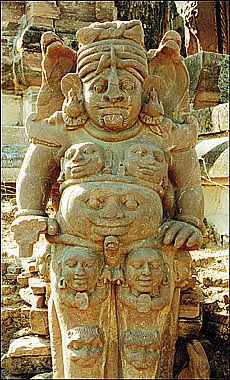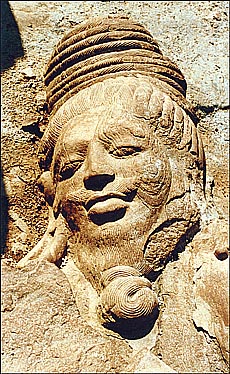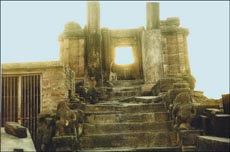We convey our sincere good wishes to Jacob Dahl who has to succceed, together with other scholars, engaged on the research effort, to decipher Proto-elamite writing system.
A write-up appeared on BBC News. It is appended. One wonders if an adapted version of the new technique can also be used to unravel the rattles of Chanhu-daro, now kept in Museum of Fine Arts, Boston. Another technique used is of airborne altimetric LiDAR (Light Detection and Ranging). Experts can examine the possibility of combing such techniques to define the contents of the Chanhu-daro rattles.
There are at least 10 rattles of varying dimensions exhibited in the Museum, as detailed below (and shown in the embedded pdf document).
There should be some non-destructive method of figuring out the 'tokens' embedded in these rattles. They are likely to be the complex token-types found in Sumer and other sites and discussed by Denise Schmandt-Besserat in her pioneering work on the accounting systems developed with complex tokens.
The thesis to be tested if these tokens and bullae (as rattles) evolved into tiny incised miniature tablets found in sites like Harappa. These Meluhha writing tablets deploy hieroglyphs as category-markers of bronze-age artefacts. There are intimations from the HARP report that some tablets ended up as messages on seals, which point to the use of tablets during the bronze-age manufacturing processes from the smelter to the furnace, from the furnace to the moulds, from the moulds to the forge before the products are readied to be couriered or carted. See: http://bharatkalyan97.blogspot.in/2013/07/ancient-near-east-transition-fro-bullae.html Ancient Near East archaeological context: transition to Bronze Age. Indus writing is for trade in this transition.
See also: http://bharatkalyan97.blogspot.in/2013/08/ancient-near-east-bronze-age-heralded.html Ancient Near East Bronze Age -- heralded by Meluhha writing
Clay rattles (no images): 36.2742, 36.2744Legacy dimension: D. 1.90 in., 36.2745Legacy dimension: D. 1.83 in., 36.2746Legacy dimension: D. 1.81 in., 36.2747, 36.2748 Legacy dimension: D. 1.54 in.
36.2226 Clay Legacy dimension: D. 2.0 in.
Clay Legacy dimension: D. 2.5 in.
36.2733
Ceramic; clay D. 1.74 in.
36.2240
Legacy dimension: Diam: 5.5 cm
Terracotta, buff-colored fired clay with red slip
36.2735
http://www.scribd.com/doc/157578296/Select-images-from-Chanhu-daro-Sarasvati-river-valley-S-Kalyanaraman-August-2-2013
Chanhu-daro. Subsidence of buildings owing to the flooding by River Indus. (p.529)
Chanhu-daro. Drainage system found in preliminary trenching (p.531).
Chanhu-daro. Seals(p.540)
Chanhu-daro. Toy cart.
One group of carnelian beads were ornamented with designs painted in white, the paint used being carbonate of soda that was fixed by heat. Similar beads, both in shape and designs, were worn at this same period in Sumer. And as we now know that these beads were actually made in India, it can be regarded as certain that either they were exported from the Indus valley or that Indians were emloyed as bead-makers in Sumer. A mass of tiny tubular beads of steatite was found close inside the door of a bead-maker's workshop, and so small are these beads that some 35 go the inh. Each is perfectly shaped and bored, and their positions in the mass show that they had been strung. How they were shaped and bored we are now wndeavouring to ascertain. Metal working in copper and bronze was a craft that was largely practised. Two hoards of metal utensils and tools found corroded together provided us with a considerable number when they had been separated. In fact, we found more metal in one season at Chanhu-daro than in four years' work at Mohenjo-daro. Heavy blade-axes would have been chiefly used in woodwork; and a large bronze scoop which resembles a modern coal-shovel, and was most probably usd for grai, is an entirely new discovery in the ancient world. Knives and daggers, razors of three shapes and hair-pins all show great expertness in metal-working. One of the processes used is indicated by an unfinished casting made in an open mould and destined when finished to be a spear-head. So expert, indeed, were the workers in metal that they were capable of producing complex objects like model carts. Judging from the great number of toy carts that have been found, practically every child must have had one. Mostly made of pottery, they are more frequently found broken than not. These little vehicles are of various types, and it is clear that the actual carts of the time were drawn by oxen, for large numbers of toy oxen were found with lateral holes through the shoulders to take model yokes.(pp.540-541)
"Other toys played with by the very young of the Harappa culture were pottery rattles, roughly ornamented with lines of bright red paint which was evidently guaranteed not to come off. Owing to their substantial make these rattles are very rarely found broken. The pellets inside that make the noise are of pottery; they must have been inserted in a combustible core round which the clay was wrapped, which disappeared in the process of baking."(p.542)
Source: Mackay, EJA, 1937, Excavations at Chanhu-daro in: Journal of the Royal Society of Arts, Vol. 85, No. 4405, April 23, 1937, pp 527-545 Lecture given on 5 March 1937
25 October 2012 Last updated at 13:01 GMT
Breakthrough in world's oldest undeciphered writing
By Sean Coughlan
BBC News education correspondent
![]() Proto-Elamite script
Proto-Elamite script
Experts working on proto-Elamite hope they are on the point of 'a breakthrough'
The world's oldest undeciphered writing system, which has so far defied attempts to uncover its 5,000-year-old secrets, could be about to be decoded by Oxford University academics.
This international research project is already casting light on a lost bronze age middle eastern society where enslaved workers lived on rations close to the starvation level.
TABLET TECHNOLOGY
Proto-Elamite is the name given to a writing system developed in an area that is now in south-western Iran
It was adopted about 3200BC and was borrowed from neighbouring Mesopotamia
It was written from right to left in wet clay tablets
There are more than a thousand surviving tablets in this writing
The biggest group of such texts was collected by 19th Century French archaeologists and brought back to the Louvre
While other ancient writing, such as Egyptian hieroglyphics, Sumerian and Mesopotamian, have been deciphered - attempts with proto-Elamite have proved unsuccessful
![]() Jacob Dahl wants the public and other academics to help with an online decipherment of the texts
Jacob Dahl wants the public and other academics to help with an online decipherment of the texts
"I think we are finally on the point of making a breakthrough," says Jacob Dahl, fellow of Wolfson College, Oxford and director of the Ancient World Research Cluster.
Dr Dahl's secret weapon is being able to see this writing more clearly than ever before.
In a room high up in the Ashmolean Museum in Oxford, above the Egyptian mummies and fragments of early civilisations, a big black dome is clicking away and flashing out light.
This device, part sci-fi, part-DIY, is providing the most detailed and high quality images ever taken of these elusive symbols cut into clay tablets. This is Indiana Jones with software.
This way of capturing images, developed by academics in Oxford and Southampton, is being used to help decode a writing system called proto-Elamite, used between around 3200BC and 2900BC in a region now in the south west of modern Iran.
And the Oxford team think that they could be on the brink of understanding this last great remaining cache of undeciphered texts from the ancient world.
Tablet computer
Dr Dahl, from the Oriental Studies Faculty, shipped his image-making device on the Eurostar to the Louvre Museum in Paris, which holds the most important collection of this writing.
The clay tablets were put inside this machine, the Reflectance Transformation Imaging System, which uses a combination of 76 separate photographic lights and computer processing to capture every groove and notch on the surface of the clay tablets.
It allows a virtual image to be turned around, as though being held up to the light at every possible angle.
These images will be publicly available online, with the aim of using a kind of academic crowdsourcing.
He says it's misleading to think that codebreaking is about some lonely genius suddenly understanding the meaning of a word. What works more often is patient teamwork and the sharing of theories. Putting the images online should accelerate this process.
But this is painstaking work. So far Dr Dahl has deciphered 1,200 separate signs, but he says that after more than 10 years study much remains unknown, even such basic words as "cow" or "cattle".
He admits to being "bitten" by this challenge. "It's an unknown, uncharted territory of human history," he says.
Extinct language
But why has this writing proved so difficult to interpret?
Dr Dahl suspects he might have part of the answer. He's discovered that the original texts seem to contain many mistakes - and this makes it extremely tricky for anyone trying to find consistent patterns.
He believes this was not just a case of the scribes having a bad day at the office. There seems to have been an unusual absence of scholarship, with no evidence of any lists of symbols or learning exercises for scribes to preserve the accuracy of the writing.
This first case of educational underinvestment proved fatal for the writing system, which was corrupted and then completely disappeared after only a couple of hundred years. "It's an early example of a technology being lost," he says.
"The lack of a scholarly tradition meant that a lot of mistakes were made and the writing system may eventually have become useless."
Making it even harder to decode is the fact that it's unlike any other ancient writing style. There are no bi-lingual texts and few helpful overlaps to provide a key to these otherwise arbitrary looking dashes and circles and symbols.
This is a writing system - and not a spoken language - so there's no way of knowing how words sounded, which might have provided some phonetic clues.
Dr Dahl says that one of the really important historical significances of this proto-Elamite writing is that it was the first ever recorded case of one society adopting writing from another neighbouring group.
But infuriatingly for the codebreakers, when these proto-Elamites borrowed the concept of writing from the Mesopotamians, they made up an entirely different set of symbols.
Why they should make the intellectual leap to embrace writing and then at the same time re-invent it in a different local form remains a puzzle.
But it provides a fascinating snapshot of how ideas can both spread and change.
Mr One Hundred
In terms of written history, this is the very remote past. But there is also something very direct and almost intimate about it too.
You can see fingernail marks in the clay. These neat little symbols and drawings are clearly the work of an intelligent mind.
These were among the first attempts by our human ancestors to try to make a permanent record of their surroundings. What we're doing now - my writing and your reading - is a direct continuation.
But there are glimpses of their lives to suggest that these were tough times. It wasn't so much a land of milk and honey, but porridge and weak beer.
Even without knowing all the symbols, Dr Dahl says it's possible to work out the context of many of the messages on these tablets.
The numbering system is also understood, making it possible to see that much of this information is about accounts of the ownership and yields from land and people. They are about property and status, not poetry.
This was a simple agricultural society, with a ruling household. Below them was a tier of powerful middle-ranking figures and further below were the majority of workers, who were treated like "cattle with names".
Their rulers have titles or names which reflect this status - the equivalent of being called "Mr One Hundred", he says - to show the number of people below him.
It's possible to work out the rations given to these farm labourers.
Dr Dahl says they had a diet of barley, which might have been crushed into a form of porridge, and they drank weak beer.
The amount of food received by these farm workers hovered barely above the starvation level.
However the higher status people might have enjoyed yoghurt, cheese and honey. They also kept goats, sheep and cattle.
For the "upper echelons, life expectancy for some might have been as long as now", he says. For the poor, he says it might have been as low as in today's poorest countries.
The tablets also have surprises. Even though there are plenty of pictures of animals and mythical creatures, Dr Dahl says there are no representations of the human form of any kind. Not even a hand or an eye.
Was this some kind of cultural or religious taboo?
Dr Dahl remains passionate about what this work says about such societies, digging into the deepest roots of civilisation. This is about where so much begins. For instance, proto-Elamite was the first writing ever to use syllables.
If Macbeth talked about the "last syllable of recorded time", the proto-Elamites were there for the first.
And with sufficient support, Dr Dahl says that within two years this last great lost writing could be fully understood.
Thank you for the very many offers of help. In response, Dr Dahl has set up a website for people wanting to get involved with the decipherment:
http://cdli.ox.ac.uk/wiki/proto-elamite and an email address: cdli.oxford@orinst.ox.ac.uk. A small selection of the earlier comments are published here.
Allow me to be the 967th person to translate this to read "Hello, Sweetie!"
Mark, Durham, New Hampshire
Sounds fascinating. All I've done in this area is trying to decipher the words on 120 year old land grants for this area, but the problem was quality of the images. It appears that may not be a problem here
Peter Vander Sar, Canada
I am fascinated by this article and the attempt to decipher the tablets so would very much like to help.
Susan Merkeley, British Columbia, Canada
It might help, if comparative (pre) Zorastrian phonetic basics are adopted
Anil A. Vyas, Pune, India
Being an agrarian community it's possible that the phases of the moon might also be mentioned re planting cycles though I'm sure that has already been thought about by the deciphering team.
Sarah Waldock, Ipswich
I am currently studying Classics at UCL, and so anything to do with ancient scripts or writing is so interesting, congratulations to Dr. Dahl for all his hard working paying off!
Fiona, London
Sounds a fascinating and intriguing problem. It would be great to contribute, even if only in some small way, to finding the solution.
Simon, Derbyshire
What a great article! More of this please BBC
Simon, London
This is a problem tailor made for the boffins at GCHQ Cheltenham. Let them do something interesting in their spare time. There must be lots of computer + brain power there. Alternatively, or additionally, there may still be some oldies from Bletchley Park who would like to have a go.
Peter Crawford, Banbury
Now this is one of the most fascinating articles I have read for a long time. I dearly hope that there is a documentary going to be made out of this as it may , just may, unlock an unknown understanding of how we all work.
David Ford, Cheshire
I am currently working with an extremely old, yet still spoken language of the Nilotic family in East Africa. I don't know if there is anything that I could do to help but I would love a shot. I am young, 29, however, I have studied linguistic, specifically language acquisition. In my phonology course I loved the code breaking aspects of phonological rule ordering. Some believe that by ordering rules properly one can discover proto-features of a language that has evolved into a new language. I would be curious to see if this approach could be applied to this challenge. Start with suspected language derivatives or cognates and work backwards.
Robert Lane, Uganda
I am delighted to read this story that is tangentially related to Iran. I am not expert in linguistic, but one story from my childhood in Iran always fascinates me. It was 1964-1965 academic year and I was a student in Hadaf High School in Teheran, where Mr. Mohegh, my Persian literature teacher told us the story about the creation of our current Persian alphabets (about 1400 years old) that is also being used (and modified) by Arabs and is from right to left. Apparently this was the research topic of Mr. Mohegh's degree. He said this alphabet is created phonetically and according to the shape of our lips and tongue and artery. For instance, "M" in English is just a symbol, but in Persian when such a sound is created, then our lips and the rest form in such a manner that Persian "M" is sounded and that final shape becomes our "M". Similarly, he showed for many other letters such as "B" and "T", etc.. So, if this is the case in Persian, and since this alphabet is !
Mansour Eslami, Chicago
This sounds like something that would really intrigue some of my students - I am a secondary teacher of MFL - would we be able to get involved please?
Hannah Ryan, Hythe, Kent
Having studied anthropology and linguistics , I would love to try and help solve the mystery of this cipher. No guarantees though! As I live on a South Sea island with few diversions or entertainment, it would certainly be a privilege and challenge to try and help Dr. Dahl with the code.
Helga Saint-Pierre, New Caledonia
Simply fascinating! I would very much like to help in any way that I can with the ongoing project of deciphering the writings of the Proto-Elamites
Dr Giles Hodgskins, British Army (BFG)
So fascinating! Could the representation of cattle (horns) be also the representation of man/god or taboo divinity ? Could it be linked to the reason why the old testament starts with beta and not aleph (horn)?
Caroline, Bath
I know what this is- It's a shopping list and DIY request from a wife for husband, who has "lost"it on the way after a few barley wines. Domestic life really has not changed that much!
David Buxton, Hampshire
It quite clearly says "Take two paracetamol every six hours, with plenty of fluids, and if symptoms persist, come back to the surgery in a couple of days."
Keiron Marsden, Bristol
The attorney general has finally published Prince Charles's 27 letters to government ministers.
Mista C,
Would be very interested in helping in way possible. I am no Champollion or Ventris and it looks as though there is a corpus that would mean it is more possible than the Phaistos Disc. Application of AI/ANN as mentioned by a previous poster will not work as it will potentially show a pattern, but nothing to match that pattern against. What is interesting is that there are potential errors in the text. Probably most things have been tried however my thoughts are that the errors might give an in road. Analyse the distribution of the errors using known translations and where symbols are known to be replaced. Then map the statistical anomaly to the unknown pieces of text generating a candidate true text by substituting potential "correct" symbols. Then using the candidate text, see if there are more symbols resolved than in the original. View the highest resolved texts to see if they make sense in the context.
Richard C, Harpenden
It looks to me like 2, maybe 3 forms overlaid, certainly looks like two different hands have made it.
Tim Copsey (Graphics expert), Holmfirth
I'm looking forward to seeing or reading about how this gets broken. The story of the heiroglyphics breakthrough - where the cartouches were identified as known names and it all flowed from there was a treat. Maybe something similar will provide a breaktrhough here.
Sandy Fox, Derby
Considering that this was a simple agricultural society,where life for the average worker would be short,could this not be a manual/diary of agricultural practices and seasons? This could then be left for surviving members of the community to contiue with what was considered good husbandry.Presumably a record of astrological movements and religious festivals could have also been recorded.
Dan, Spain
I would be interested in helping studying the script. I am a Phd student in formal logic, so perhaps i could contribute something in the way of deciphering relevant patterns.
Riccardo, Amsterdam
I'm 99% sure that someone has thought of this already, but what about using some sort of Artificial Intelligence approach, such as an unsupervised Neural Network for pattern recognition?
Mike Overhill-Smith, York
I would like to congradulate Dr. Dahl & BBC for this fascinating findings. Since I came from (Sumerian and Acadian) Mesopotamian origin. I would like to add some measures like: the size of the symbols and the repeatability of these codes in comparison with Mesopotamian writings which might find some sort of pattern. I agree with Sarah Waldock, Ipswich about it could refer to replanting cycles (Crescent for moon and dots for workers required to do the plantation..etc) as the decipher team might already knows that. Good luck
Dr Safa Ramadaan, Buckinghamshire
I am a very keen amateur cryptologist and find that being a strong County Chess player is useful in such applications. After all The Enigma code was broken by chess players alike.
Sean Ralph, Birmingham
Facinating article. Maybe I can be of help. Partly by genetic heritage (my granfather Gustave Jequier discovered the Code of Hammurabi and must have brought back to the Louvre several of these tablets from his digs in Susa in 1897-1902), partly by personal taste in linguistics (basic knowledge of Semitic languages + Finnish, Chinese, etc.). My basic belief: proto-Elamic linked to African languages, possibly Burushaski and Australian languages. Compare also with Vinca writing
Nicolas Jequier, Lausanne, Switzerland
This is great! I am a professor of linguistics teaching a course on writing systems this term. We have been talking about techniques for deciphering undeciphered writing systems, and I would love to have a look at your database and share it with my class! Thanks!
Dr Laura C. Robinson, Santa Barbara, California
http://www.bbc.co.uk/news/business-19964786
A write-up appeared on BBC News. It is appended. One wonders if an adapted version of the new technique can also be used to unravel the rattles of Chanhu-daro, now kept in Museum of Fine Arts, Boston. Another technique used is of airborne altimetric LiDAR (Light Detection and Ranging). Experts can examine the possibility of combing such techniques to define the contents of the Chanhu-daro rattles.
There are at least 10 rattles of varying dimensions exhibited in the Museum, as detailed below (and shown in the embedded pdf document).
There should be some non-destructive method of figuring out the 'tokens' embedded in these rattles. They are likely to be the complex token-types found in Sumer and other sites and discussed by Denise Schmandt-Besserat in her pioneering work on the accounting systems developed with complex tokens.
The thesis to be tested if these tokens and bullae (as rattles) evolved into tiny incised miniature tablets found in sites like Harappa. These Meluhha writing tablets deploy hieroglyphs as category-markers of bronze-age artefacts. There are intimations from the HARP report that some tablets ended up as messages on seals, which point to the use of tablets during the bronze-age manufacturing processes from the smelter to the furnace, from the furnace to the moulds, from the moulds to the forge before the products are readied to be couriered or carted. See: http://bharatkalyan97.blogspot.in/2013/07/ancient-near-east-transition-fro-bullae.html Ancient Near East archaeological context: transition to Bronze Age. Indus writing is for trade in this transition.
See also: http://bharatkalyan97.blogspot.in/2013/08/ancient-near-east-bronze-age-heralded.html Ancient Near East Bronze Age -- heralded by Meluhha writing
Clay rattles (no images): 36.2742, 36.2744Legacy dimension: D. 1.90 in., 36.2745Legacy dimension: D. 1.83 in., 36.2746Legacy dimension: D. 1.81 in., 36.2747, 36.2748 Legacy dimension: D. 1.54 in.
36.2226 Clay Legacy dimension: D. 2.0 in.
Clay Legacy dimension: D. 2.5 in.
36.2733
Ceramic; clay D. 1.74 in.
36.2240
Legacy dimension: Diam: 5.5 cm
Terracotta, buff-colored fired clay with red slip
36.2735
http://www.scribd.com/doc/157578296/Select-images-from-Chanhu-daro-Sarasvati-river-valley-S-Kalyanaraman-August-2-2013
Select images from Chanhu-daro, Sarasvati river valley (S. Kalyanaraman, August 2, 2013)
Chanhu-daro. Subsidence of buildings owing to the flooding by River Indus. (p.529)
Chanhu-daro. Drainage system found in preliminary trenching (p.531).
Chanhu-daro. Seals(p.540)
Chanhu-daro. Toy cart.
One group of carnelian beads were ornamented with designs painted in white, the paint used being carbonate of soda that was fixed by heat. Similar beads, both in shape and designs, were worn at this same period in Sumer. And as we now know that these beads were actually made in India, it can be regarded as certain that either they were exported from the Indus valley or that Indians were emloyed as bead-makers in Sumer. A mass of tiny tubular beads of steatite was found close inside the door of a bead-maker's workshop, and so small are these beads that some 35 go the inh. Each is perfectly shaped and bored, and their positions in the mass show that they had been strung. How they were shaped and bored we are now wndeavouring to ascertain. Metal working in copper and bronze was a craft that was largely practised. Two hoards of metal utensils and tools found corroded together provided us with a considerable number when they had been separated. In fact, we found more metal in one season at Chanhu-daro than in four years' work at Mohenjo-daro. Heavy blade-axes would have been chiefly used in woodwork; and a large bronze scoop which resembles a modern coal-shovel, and was most probably usd for grai, is an entirely new discovery in the ancient world. Knives and daggers, razors of three shapes and hair-pins all show great expertness in metal-working. One of the processes used is indicated by an unfinished casting made in an open mould and destined when finished to be a spear-head. So expert, indeed, were the workers in metal that they were capable of producing complex objects like model carts. Judging from the great number of toy carts that have been found, practically every child must have had one. Mostly made of pottery, they are more frequently found broken than not. These little vehicles are of various types, and it is clear that the actual carts of the time were drawn by oxen, for large numbers of toy oxen were found with lateral holes through the shoulders to take model yokes.(pp.540-541)
"Other toys played with by the very young of the Harappa culture were pottery rattles, roughly ornamented with lines of bright red paint which was evidently guaranteed not to come off. Owing to their substantial make these rattles are very rarely found broken. The pellets inside that make the noise are of pottery; they must have been inserted in a combustible core round which the clay was wrapped, which disappeared in the process of baking."(p.542)
Source: Mackay, EJA, 1937, Excavations at Chanhu-daro in: Journal of the Royal Society of Arts, Vol. 85, No. 4405, April 23, 1937, pp 527-545 Lecture given on 5 March 1937
25 October 2012 Last updated at 13:01 GMT
Breakthrough in world's oldest undeciphered writing
By Sean Coughlan
BBC News education correspondent
 Proto-Elamite script
Proto-Elamite scriptExperts working on proto-Elamite hope they are on the point of 'a breakthrough'
The world's oldest undeciphered writing system, which has so far defied attempts to uncover its 5,000-year-old secrets, could be about to be decoded by Oxford University academics.
This international research project is already casting light on a lost bronze age middle eastern society where enslaved workers lived on rations close to the starvation level.
TABLET TECHNOLOGY
Proto-Elamite is the name given to a writing system developed in an area that is now in south-western Iran
It was adopted about 3200BC and was borrowed from neighbouring Mesopotamia
It was written from right to left in wet clay tablets
There are more than a thousand surviving tablets in this writing
The biggest group of such texts was collected by 19th Century French archaeologists and brought back to the Louvre
While other ancient writing, such as Egyptian hieroglyphics, Sumerian and Mesopotamian, have been deciphered - attempts with proto-Elamite have proved unsuccessful
 Jacob Dahl wants the public and other academics to help with an online decipherment of the texts
Jacob Dahl wants the public and other academics to help with an online decipherment of the texts"I think we are finally on the point of making a breakthrough," says Jacob Dahl, fellow of Wolfson College, Oxford and director of the Ancient World Research Cluster.
Dr Dahl's secret weapon is being able to see this writing more clearly than ever before.
In a room high up in the Ashmolean Museum in Oxford, above the Egyptian mummies and fragments of early civilisations, a big black dome is clicking away and flashing out light.
This device, part sci-fi, part-DIY, is providing the most detailed and high quality images ever taken of these elusive symbols cut into clay tablets. This is Indiana Jones with software.
This way of capturing images, developed by academics in Oxford and Southampton, is being used to help decode a writing system called proto-Elamite, used between around 3200BC and 2900BC in a region now in the south west of modern Iran.
And the Oxford team think that they could be on the brink of understanding this last great remaining cache of undeciphered texts from the ancient world.
Tablet computer
Dr Dahl, from the Oriental Studies Faculty, shipped his image-making device on the Eurostar to the Louvre Museum in Paris, which holds the most important collection of this writing.
The clay tablets were put inside this machine, the Reflectance Transformation Imaging System, which uses a combination of 76 separate photographic lights and computer processing to capture every groove and notch on the surface of the clay tablets.
It allows a virtual image to be turned around, as though being held up to the light at every possible angle.
These images will be publicly available online, with the aim of using a kind of academic crowdsourcing.
He says it's misleading to think that codebreaking is about some lonely genius suddenly understanding the meaning of a word. What works more often is patient teamwork and the sharing of theories. Putting the images online should accelerate this process.
But this is painstaking work. So far Dr Dahl has deciphered 1,200 separate signs, but he says that after more than 10 years study much remains unknown, even such basic words as "cow" or "cattle".
He admits to being "bitten" by this challenge. "It's an unknown, uncharted territory of human history," he says.
Extinct language
But why has this writing proved so difficult to interpret?
Dr Dahl suspects he might have part of the answer. He's discovered that the original texts seem to contain many mistakes - and this makes it extremely tricky for anyone trying to find consistent patterns.
He believes this was not just a case of the scribes having a bad day at the office. There seems to have been an unusual absence of scholarship, with no evidence of any lists of symbols or learning exercises for scribes to preserve the accuracy of the writing.
This first case of educational underinvestment proved fatal for the writing system, which was corrupted and then completely disappeared after only a couple of hundred years. "It's an early example of a technology being lost," he says.
"The lack of a scholarly tradition meant that a lot of mistakes were made and the writing system may eventually have become useless."
Making it even harder to decode is the fact that it's unlike any other ancient writing style. There are no bi-lingual texts and few helpful overlaps to provide a key to these otherwise arbitrary looking dashes and circles and symbols.
This is a writing system - and not a spoken language - so there's no way of knowing how words sounded, which might have provided some phonetic clues.
Dr Dahl says that one of the really important historical significances of this proto-Elamite writing is that it was the first ever recorded case of one society adopting writing from another neighbouring group.
But infuriatingly for the codebreakers, when these proto-Elamites borrowed the concept of writing from the Mesopotamians, they made up an entirely different set of symbols.
Why they should make the intellectual leap to embrace writing and then at the same time re-invent it in a different local form remains a puzzle.
But it provides a fascinating snapshot of how ideas can both spread and change.
Mr One Hundred
In terms of written history, this is the very remote past. But there is also something very direct and almost intimate about it too.
You can see fingernail marks in the clay. These neat little symbols and drawings are clearly the work of an intelligent mind.
These were among the first attempts by our human ancestors to try to make a permanent record of their surroundings. What we're doing now - my writing and your reading - is a direct continuation.
But there are glimpses of their lives to suggest that these were tough times. It wasn't so much a land of milk and honey, but porridge and weak beer.
Even without knowing all the symbols, Dr Dahl says it's possible to work out the context of many of the messages on these tablets.
The numbering system is also understood, making it possible to see that much of this information is about accounts of the ownership and yields from land and people. They are about property and status, not poetry.
This was a simple agricultural society, with a ruling household. Below them was a tier of powerful middle-ranking figures and further below were the majority of workers, who were treated like "cattle with names".
Their rulers have titles or names which reflect this status - the equivalent of being called "Mr One Hundred", he says - to show the number of people below him.
It's possible to work out the rations given to these farm labourers.
Dr Dahl says they had a diet of barley, which might have been crushed into a form of porridge, and they drank weak beer.
The amount of food received by these farm workers hovered barely above the starvation level.
However the higher status people might have enjoyed yoghurt, cheese and honey. They also kept goats, sheep and cattle.
For the "upper echelons, life expectancy for some might have been as long as now", he says. For the poor, he says it might have been as low as in today's poorest countries.
The tablets also have surprises. Even though there are plenty of pictures of animals and mythical creatures, Dr Dahl says there are no representations of the human form of any kind. Not even a hand or an eye.
Was this some kind of cultural or religious taboo?
Dr Dahl remains passionate about what this work says about such societies, digging into the deepest roots of civilisation. This is about where so much begins. For instance, proto-Elamite was the first writing ever to use syllables.
If Macbeth talked about the "last syllable of recorded time", the proto-Elamites were there for the first.
And with sufficient support, Dr Dahl says that within two years this last great lost writing could be fully understood.
Thank you for the very many offers of help. In response, Dr Dahl has set up a website for people wanting to get involved with the decipherment:
http://cdli.ox.ac.uk/wiki/proto-elamite and an email address: cdli.oxford@orinst.ox.ac.uk. A small selection of the earlier comments are published here.
Allow me to be the 967th person to translate this to read "Hello, Sweetie!"
Mark, Durham, New Hampshire
Sounds fascinating. All I've done in this area is trying to decipher the words on 120 year old land grants for this area, but the problem was quality of the images. It appears that may not be a problem here
Peter Vander Sar, Canada
I am fascinated by this article and the attempt to decipher the tablets so would very much like to help.
Susan Merkeley, British Columbia, Canada
It might help, if comparative (pre) Zorastrian phonetic basics are adopted
Anil A. Vyas, Pune, India
Being an agrarian community it's possible that the phases of the moon might also be mentioned re planting cycles though I'm sure that has already been thought about by the deciphering team.
Sarah Waldock, Ipswich
I am currently studying Classics at UCL, and so anything to do with ancient scripts or writing is so interesting, congratulations to Dr. Dahl for all his hard working paying off!
Fiona, London
Sounds a fascinating and intriguing problem. It would be great to contribute, even if only in some small way, to finding the solution.
Simon, Derbyshire
What a great article! More of this please BBC
Simon, London
This is a problem tailor made for the boffins at GCHQ Cheltenham. Let them do something interesting in their spare time. There must be lots of computer + brain power there. Alternatively, or additionally, there may still be some oldies from Bletchley Park who would like to have a go.
Peter Crawford, Banbury
Now this is one of the most fascinating articles I have read for a long time. I dearly hope that there is a documentary going to be made out of this as it may , just may, unlock an unknown understanding of how we all work.
David Ford, Cheshire
I am currently working with an extremely old, yet still spoken language of the Nilotic family in East Africa. I don't know if there is anything that I could do to help but I would love a shot. I am young, 29, however, I have studied linguistic, specifically language acquisition. In my phonology course I loved the code breaking aspects of phonological rule ordering. Some believe that by ordering rules properly one can discover proto-features of a language that has evolved into a new language. I would be curious to see if this approach could be applied to this challenge. Start with suspected language derivatives or cognates and work backwards.
Robert Lane, Uganda
I am delighted to read this story that is tangentially related to Iran. I am not expert in linguistic, but one story from my childhood in Iran always fascinates me. It was 1964-1965 academic year and I was a student in Hadaf High School in Teheran, where Mr. Mohegh, my Persian literature teacher told us the story about the creation of our current Persian alphabets (about 1400 years old) that is also being used (and modified) by Arabs and is from right to left. Apparently this was the research topic of Mr. Mohegh's degree. He said this alphabet is created phonetically and according to the shape of our lips and tongue and artery. For instance, "M" in English is just a symbol, but in Persian when such a sound is created, then our lips and the rest form in such a manner that Persian "M" is sounded and that final shape becomes our "M". Similarly, he showed for many other letters such as "B" and "T", etc.. So, if this is the case in Persian, and since this alphabet is !
Mansour Eslami, Chicago
This sounds like something that would really intrigue some of my students - I am a secondary teacher of MFL - would we be able to get involved please?
Hannah Ryan, Hythe, Kent
Having studied anthropology and linguistics , I would love to try and help solve the mystery of this cipher. No guarantees though! As I live on a South Sea island with few diversions or entertainment, it would certainly be a privilege and challenge to try and help Dr. Dahl with the code.
Helga Saint-Pierre, New Caledonia
Simply fascinating! I would very much like to help in any way that I can with the ongoing project of deciphering the writings of the Proto-Elamites
Dr Giles Hodgskins, British Army (BFG)
So fascinating! Could the representation of cattle (horns) be also the representation of man/god or taboo divinity ? Could it be linked to the reason why the old testament starts with beta and not aleph (horn)?
Caroline, Bath
I know what this is- It's a shopping list and DIY request from a wife for husband, who has "lost"it on the way after a few barley wines. Domestic life really has not changed that much!
David Buxton, Hampshire
It quite clearly says "Take two paracetamol every six hours, with plenty of fluids, and if symptoms persist, come back to the surgery in a couple of days."
Keiron Marsden, Bristol
The attorney general has finally published Prince Charles's 27 letters to government ministers.
Mista C,
Would be very interested in helping in way possible. I am no Champollion or Ventris and it looks as though there is a corpus that would mean it is more possible than the Phaistos Disc. Application of AI/ANN as mentioned by a previous poster will not work as it will potentially show a pattern, but nothing to match that pattern against. What is interesting is that there are potential errors in the text. Probably most things have been tried however my thoughts are that the errors might give an in road. Analyse the distribution of the errors using known translations and where symbols are known to be replaced. Then map the statistical anomaly to the unknown pieces of text generating a candidate true text by substituting potential "correct" symbols. Then using the candidate text, see if there are more symbols resolved than in the original. View the highest resolved texts to see if they make sense in the context.
Richard C, Harpenden
It looks to me like 2, maybe 3 forms overlaid, certainly looks like two different hands have made it.
Tim Copsey (Graphics expert), Holmfirth
I'm looking forward to seeing or reading about how this gets broken. The story of the heiroglyphics breakthrough - where the cartouches were identified as known names and it all flowed from there was a treat. Maybe something similar will provide a breaktrhough here.
Sandy Fox, Derby
Considering that this was a simple agricultural society,where life for the average worker would be short,could this not be a manual/diary of agricultural practices and seasons? This could then be left for surviving members of the community to contiue with what was considered good husbandry.Presumably a record of astrological movements and religious festivals could have also been recorded.
Dan, Spain
I would be interested in helping studying the script. I am a Phd student in formal logic, so perhaps i could contribute something in the way of deciphering relevant patterns.
Riccardo, Amsterdam
I'm 99% sure that someone has thought of this already, but what about using some sort of Artificial Intelligence approach, such as an unsupervised Neural Network for pattern recognition?
Mike Overhill-Smith, York
I would like to congradulate Dr. Dahl & BBC for this fascinating findings. Since I came from (Sumerian and Acadian) Mesopotamian origin. I would like to add some measures like: the size of the symbols and the repeatability of these codes in comparison with Mesopotamian writings which might find some sort of pattern. I agree with Sarah Waldock, Ipswich about it could refer to replanting cycles (Crescent for moon and dots for workers required to do the plantation..etc) as the decipher team might already knows that. Good luck
Dr Safa Ramadaan, Buckinghamshire
I am a very keen amateur cryptologist and find that being a strong County Chess player is useful in such applications. After all The Enigma code was broken by chess players alike.
Sean Ralph, Birmingham
Facinating article. Maybe I can be of help. Partly by genetic heritage (my granfather Gustave Jequier discovered the Code of Hammurabi and must have brought back to the Louvre several of these tablets from his digs in Susa in 1897-1902), partly by personal taste in linguistics (basic knowledge of Semitic languages + Finnish, Chinese, etc.). My basic belief: proto-Elamic linked to African languages, possibly Burushaski and Australian languages. Compare also with Vinca writing
Nicolas Jequier, Lausanne, Switzerland
This is great! I am a professor of linguistics teaching a course on writing systems this term. We have been talking about techniques for deciphering undeciphered writing systems, and I would love to have a look at your database and share it with my class! Thanks!
Dr Laura C. Robinson, Santa Barbara, California
http://www.bbc.co.uk/news/business-19964786






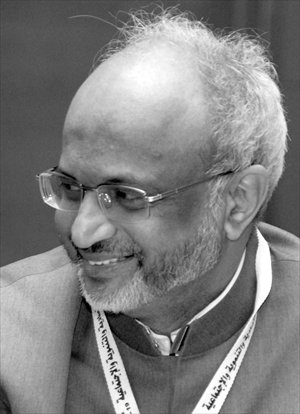
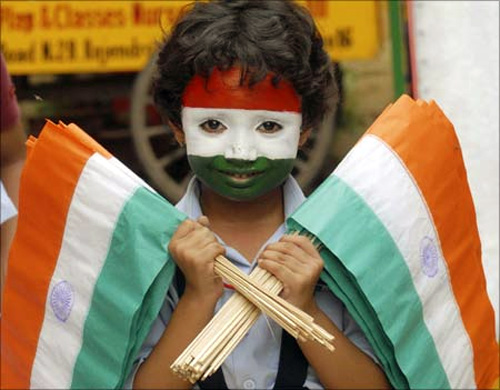
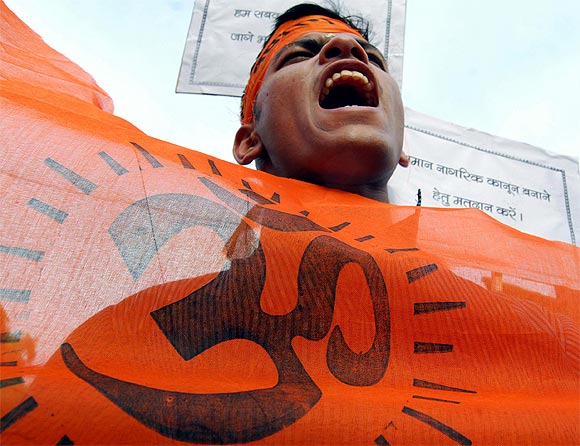

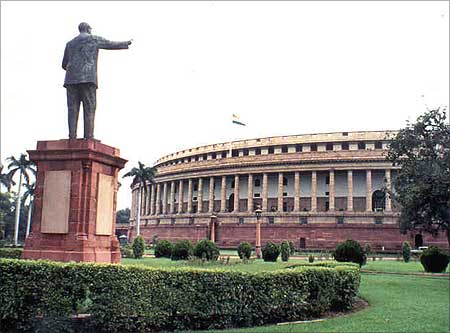





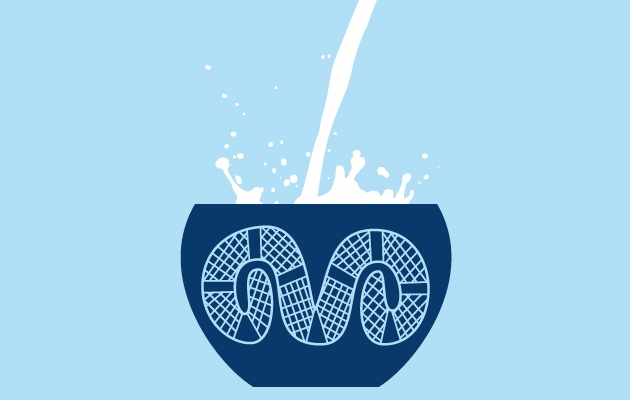





 ;
;  to mean,
to mean, 









































